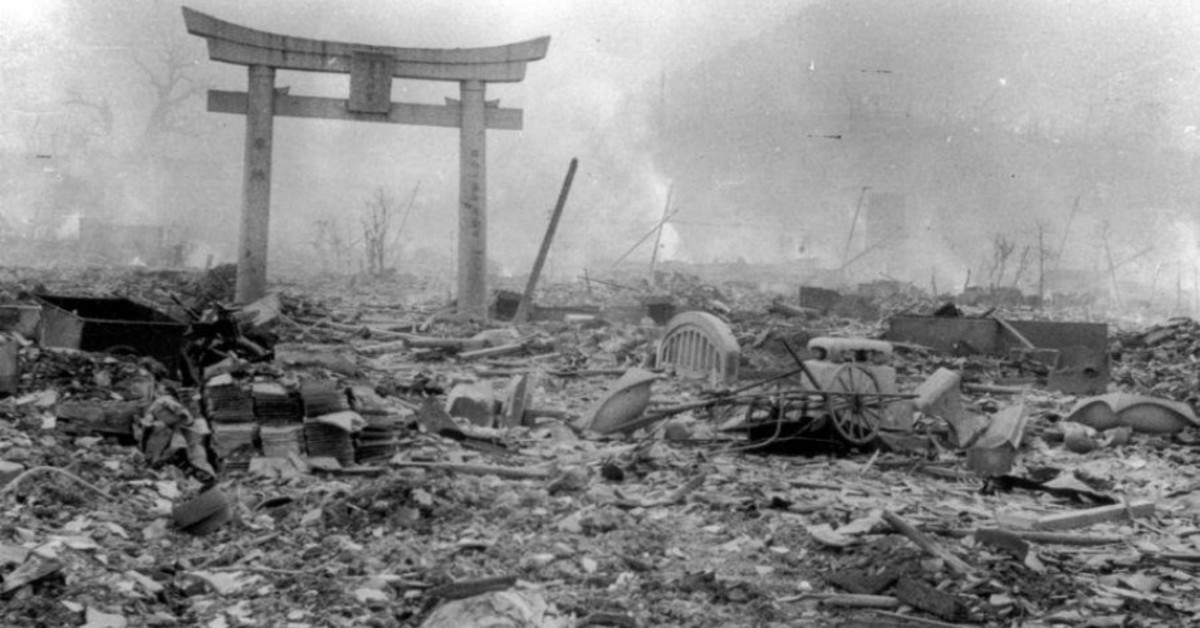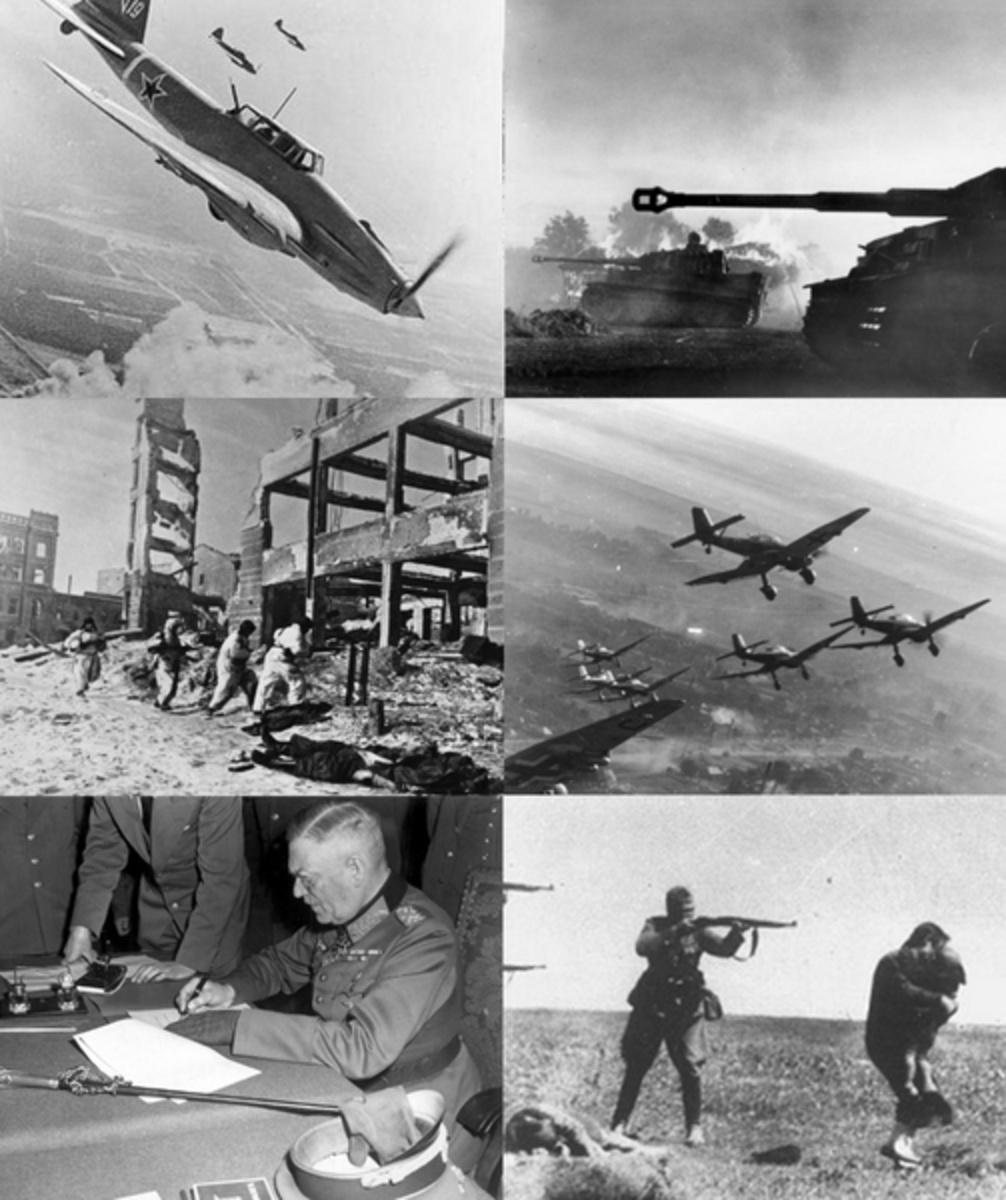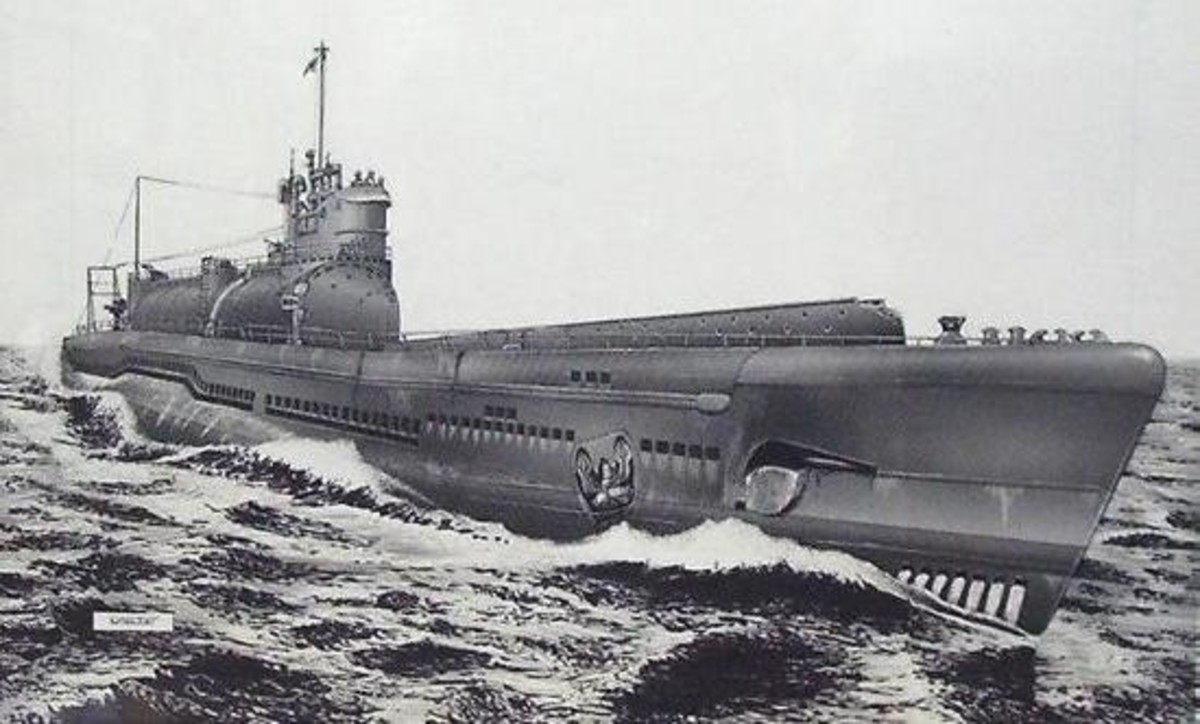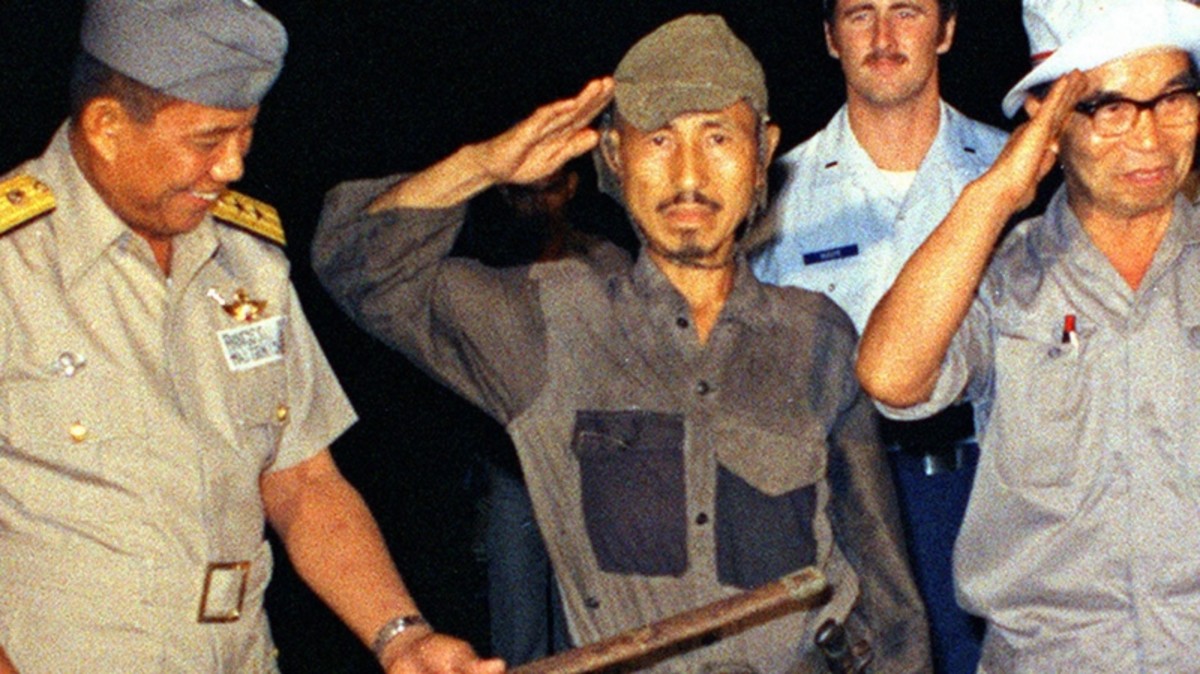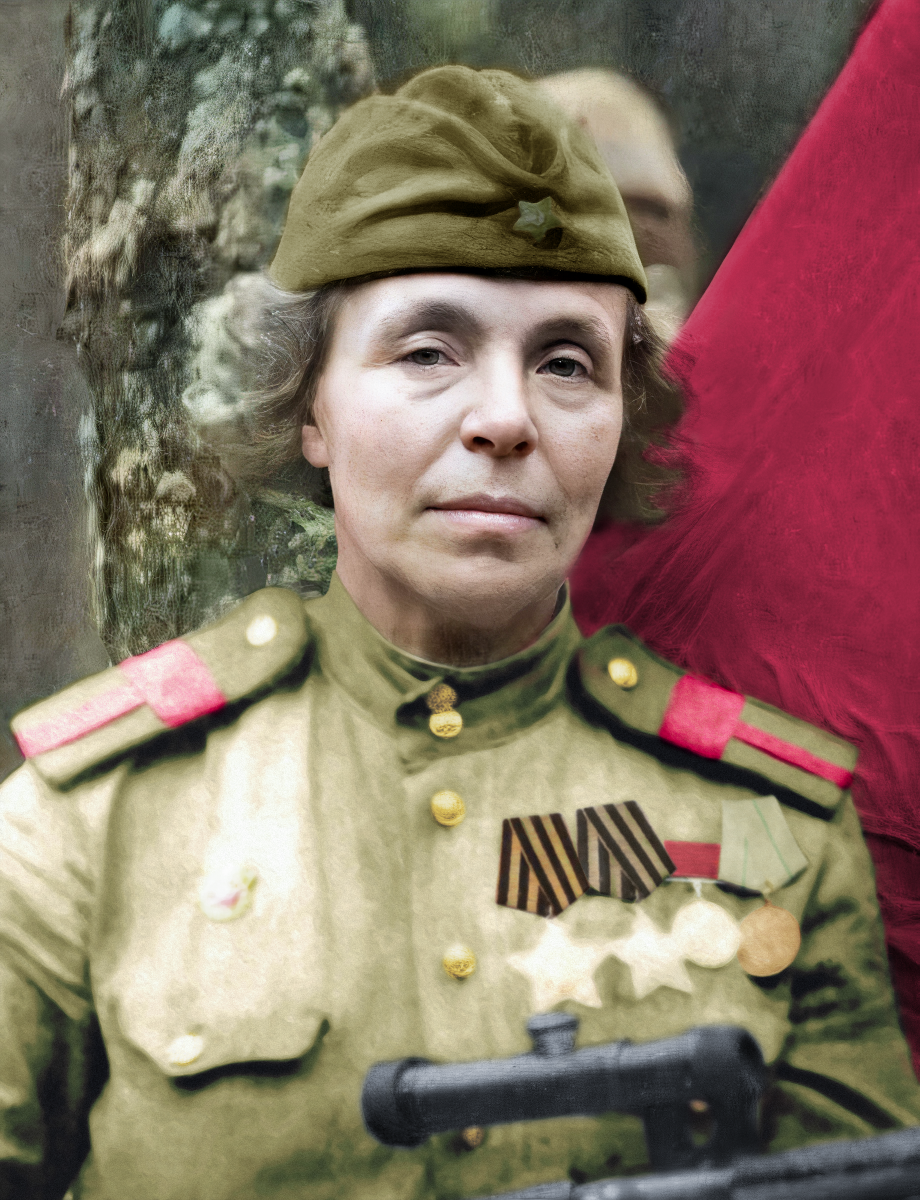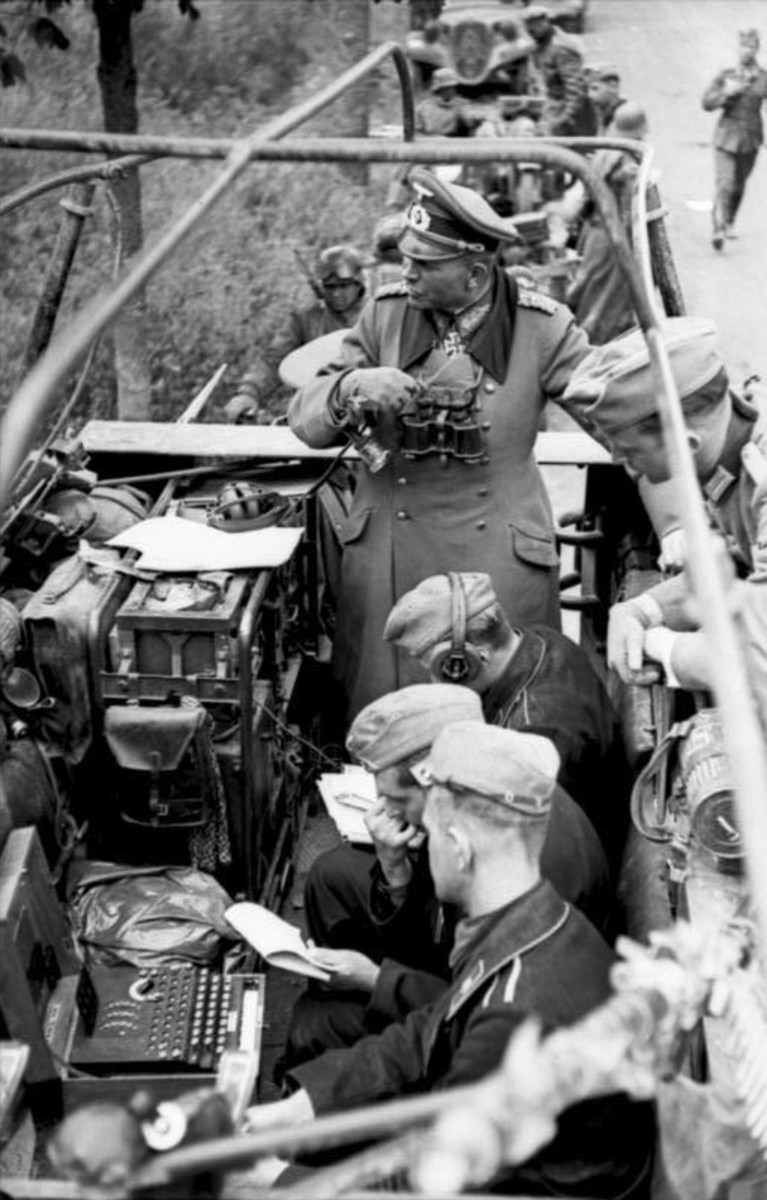- HubPages»
- Education and Science»
- History & Archaeology»
- History of the Modern Era»
- Twentieth Century History
A Soldier's Account of the End of World War II in the Pacific
Troops Disembarking from a Troopship During World War II Liberation of Philippines
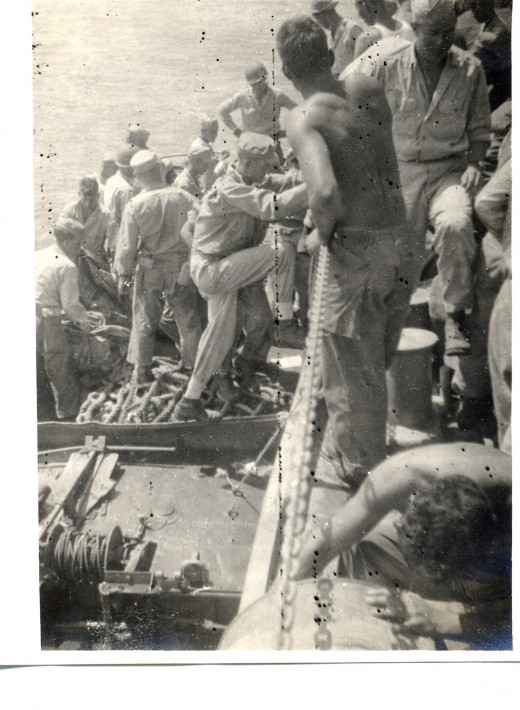
My Father Was a Veteran of the Pacific Theater in World War II
August 14, 2010
Sixty-five years ago today, August 14, 1945 in Europe and the Western Hemisphere and August 15, 1945 in Asia and Australia, people learned that the fighting in the Pacific Theater of World War II had officially ended.
With the surrender of Japan, the Allies used the same format as they had used to describe May 8, 1945, the day World War II had ended in Europe, as V-E or Victory in Europe Day and declared the date to be Victory Over Japan Day or V-J Day for short.
As children of a veteran of the Pacific conflict in World War II, my siblings and I have always had an interest in that war having grown up listening to his stories of the war and watching TV series Victory at Sea and similar documentaries on TV with him.
Our Father Left us a 283 Page Story of His Wartime Experience
In the early 1990s he dug out the journal he had kept during his military service and transcribed it into a 283 page account that gives the reader a view of the the war in the Pacific through the eyes of an enlisted member of the 16th Signal Battalion of the U.S. Sixth Army in the Pacific.
An account that begins with the famous Greetings from the President letter informing him that he had been drafted and ends with his thoughts and plans for the future as he was approaching home on the train that carried him on the final leg of his trip home from Asia.
Like most veterans of that war, our Father passed away a few years ago, leaving us not only memories of his stories but also the journal and numerous photos he took during his time in the Army between 1942 and 1945. There was also a large trove of war time letters and newspaper clippings that had been put away and stored in the attic by our Mother decades earlier.
Ox Cart in Philippines
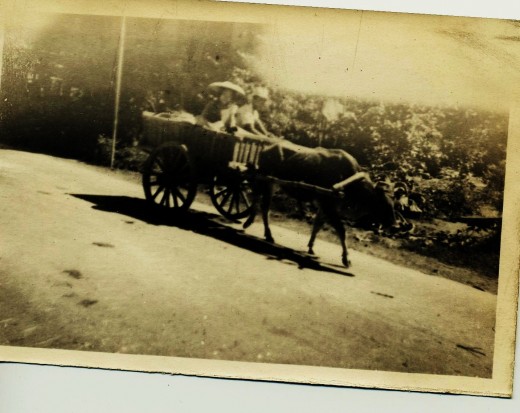
Memories of World War II Veterans Being Kept Alive by Their Children and Grandchildren
Recently my siblings and I have been discussing the idea of publishing our Father’s wartime journal and, having some marketing experience, I have been observing what others have been doing in this area.
Thus, I read with interest a piece by Mark Yost, on page W9 of the Friday October 13 Eastern Edition of The Wall Street Journal ,entitled On VJ Day, New Generations Remember , in which the author describes his attending the last official reunion of the men who served aboard PT (for patrol torpedo) boats in World War II.
This was the last reunion as there are no longer enough survivors left who are able to make the trip to the annual reunions.
However, the memory of these men and their service is being kept alive by their children, grandchildren and great-grandchildren many of whom have been attending the annual reunions with their fathers or grandfathers for years.
In fact so many descendants have been attending the reunions that they have become an unofficial splinter group who, even though they have chosen not to continue the reunions, are still working to keep the memories the PT Boat veterans alive.
B-29 Bomber at Clark Field in the Philippines
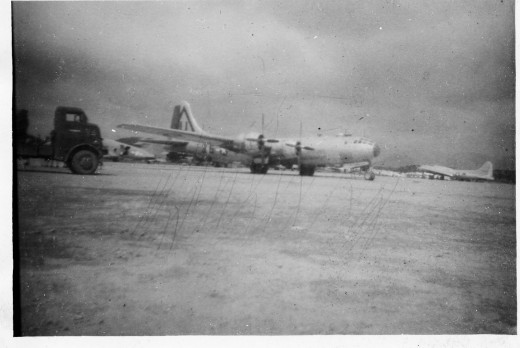
Journal Written in Story Format
After reading the article I pulled out my copy of my Father’s journal to see what he had to say about the news of the end of the war.
I don’t know what the original diary looked like but I do know from a letter that he wrote to the 16th Signal Battalion Reunion organization after completing the typed version of his journal that he relied on both the original diary notes and memory to craft the typed copy into a book length story.
Chapter headings contain dates and the dates of significant events are noted but the book is a non-fiction account in story format rather than a collection of day to day diary entries.
The Re-Taking of Luzon Island by the Sixth Army
The end of the war found my Father and his unit in the town of San Fernando on the island of Luzon in the Philippine Islands.
His unit had arrived in the Lingayen Gulf on the island of Luzon on January 13, 1945 four days after the first wave of General MacArthur’s invasion force had stormed ashore on January 9th.
After surviving some Japanese air attacks on their convoy which had resulted in the sinking of a couple of the troop ships in the flotilla, my Father and his unit arrived in the Gulf. With intense fighting still in progress around them, they immediately began unloading their equipment on a strip of beach that had been secured earlier in the invasion.
He devotes about five pages to describing the fighting in the distance and his work in the message center while moving about behind the advancing infantry.
Some time during the first week in February 1945 his unit reached the town of San Fernando and there they stayed until the war ended and they were sent to Japan as part of the army of occupation.
Moving Equipment Ashore In Luzon
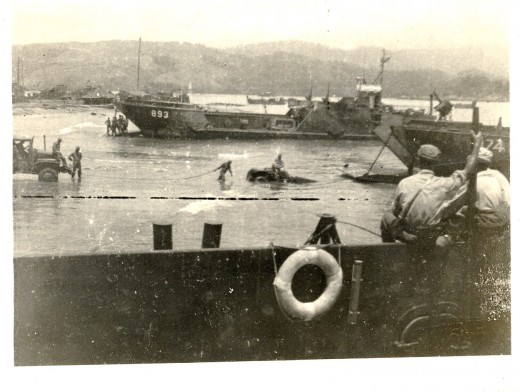
A Rehabilitation Program - Army Style
By May 1945 the Philippines had been retaken and the atmosphere, as described in the journal seemed relaxed. He notes that in April Company B of the 16th Signal Battalion had ceased operations and had undertaken a rehabilitation program.
In May Company B returned to work and Company A, which my Father was in, undertook the rehabilitation program.
My Father describes the rehabilitation as follows:
Our program started out with much grumbling from the fellows, who have always learned to be rather suspicious of anything like that. However, it wasn’t at all bad. In the morning we fell out for a few minutes of calisthenics, and some drill. Then we had classes to attend. Little was taught, and even less was learned from these classes, but he Colonel wanted them to be held. Elaborate schedules were made up to account for all of our time. (Copyright © 1942-1945, 2010 Estate of Charles Nugent Sr.)
The rehabilitation program was apparently a way for the Army to keep the troops busy and remind them that they were still in the Army despite the lull in the war.
Setting Up Camp
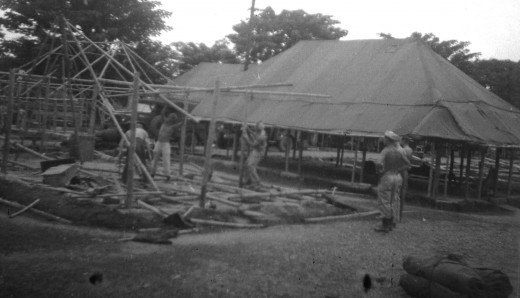
A Point System For Going Home is Announced
Aside from the Rehabilitation Program, life, as described by my Father, was relaxed and very casual.
Work loads were light and there was plenty of time to read, watch movies and travel around. My Father describes a number of trips lasting a day or more to various areas around San Fernando.
Some was free time on a furlough while others were business of sorts - there was a need to deliver or pick something up in another town and four or five guys would either be recruited or volunteer to deliver or pick up a small item. The name of the game was keeping busy and avoiding boredom.
Two big concerns on everyone’s mind that summer was the newly announced point system and the pending invasion of Japan.
By the summer of 1945 the United States had over eight million troops deployed around the world fighting in Europe, the Pacific and the China-Burma-India theaters of the war.
Knowing that the war would soon be ending, the U.S. War Department developed a point system as a fair way to determine the order in which troops would be brought home. As my Father describes it:
The point system, which had recently been set up, sounded promising, because our outfit had spent quite a bit of time overseas, and had accumulated four combat stars- New Guinea, Bismark Archipelago, Leyte-Samar, and Luzon. A tentative score of 85 points was fixed until a new and more accurate and critical point score could be fixed....It seemed to be the general consensus of opinion that the score would be lowered to around 70 or 75. Our outfit had plenty of reason to sweat, since practically everyone had between 70 and 75. I had 76, my Purple Heart adding 5 points. (Copyright © 1942-1945, 2010 Estate of Charles Nugent Sr.)
My Father Posing On A Destroyed Japanese Plane at Clark Field
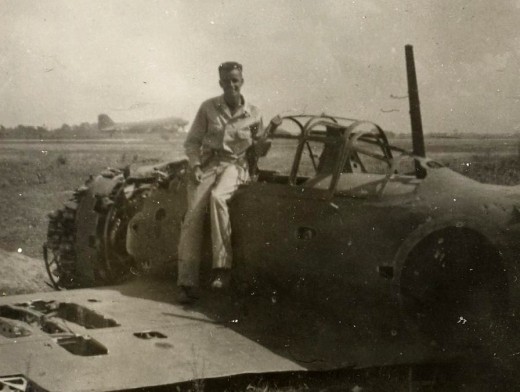
Troops in San Fernando Braced Themselves for Invasion of Japan
Going home soon was on everyone's mind.
In addition to each person’s longing to return to their homes and families as soon as possible, an early rotation back to the U.S. was also seen as a matter of life or death for those in the U.S. Sixth Army in the Philippines.
It was widely believed (and this belief was confirmed after the war when the plans for the invasion of Japan were declassified and released to the public) that the U.S. Sixth Army would be primarily responsible for the invasion and occupation of Japan and this would involve huge losses.
Wishes are one thing and reality is another and the reality came at the beginning of August with news that the 85 point score for immediate return stateside would not be reconsidered for change until the end of the year.
And rumors that an invasion of Japan was imminent with the Sixth Army leading the way increased in frequency.
Island of Luzon in the Philippines
City of San Fernando Where my Father's unit was located on V-J Day
Former U.S. Military Air Base known as Clark Field during WW II. Airplane photos in this Hub were taken here.
City of Manila on the Island of Luzon. Manila is the capital of the Philippine Islands.
A Church in the Philippines
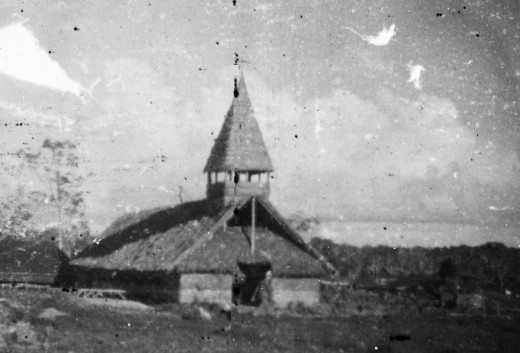
Praying for Peace Hours Before War Ends
Despite the magnitude of the news of the end of the war, my Father’s description of that first V-J day consumes only a page and a half. He begins with the night of August 14th (August 13th in the U.S.):
On Wednesday night of August 14, there was nothing to do. The movies at the mess hall and theater were old ones that I had seen. My letters were written, and there was nothing to read. It struck me that it would be a good time to go to the Mass for the soldiers that was held every night at six-thirty in the church. Once again I prayed, as did thousand of others, that the war would soon end. Things looked much more encouraging since the use of the amazing atomic bomb, and the entry of Russia into the war. However, there was still nothing said in Japan that hinted an early end. So, we used our recourse to prayer to aid in ending the war, for any prayer, no matter how small it is, accomplishes some good. (Copyright © 1942-1945, 2010 Estate of Charles Nugent Sr.)
President Truman Announces The End of the War
“WE BRING YOU A SPECIAL BULLETIN!”
Exiting the church at 7:30 when the Mass ended my Father joined some other fellows under the shade of a mango tree:
We sat there talking about the war, our chances of getting home, girls, food, and about everything else. (Copyright © 1942-1945, 2010 Estate of Charles Nugent Sr.)
This continued for a couple of hours before the group broke up. It was apparently a very hot evening as my Father described heading to his tent for a bottle of beer when he suddenly heard:
“WE BRING YOU A SPECIAL BULLETIN!”
I paused as the loudspeaker in our tent blared forth with that announcement.
...”From the Domei News Agency comes the following announcement: ‘Japan will accept the Potsdam ultimatum provided they can keep their Emperor!” (Copyright © 1942-1945, 2010 Estate of Charles Nugent Sr.)
He goes on to describe the shouting and cheering as others heard the same announcement and spread the word.
Despite
the fact that the report lacked official confirmation by the Allies and
was just the passing on by U.S. military news authorities of a report
by the Japanese Domei News Agency, as well as the fact that there was a
condition attached, namely that the Japanese be allowed to keep their
Emperor, when the Potsdam Ultimatum called for unconditional surrender,
my Father and the others in the camp knew the war was over.
However,
unlike news footage of the celebrations in New York’s Times Square and
other cities around the world following the announcement of the end of
the war, the reaction in the camp in San Fernando was more subdued:
Official or unofficial, we knew it was the end. My prayers had been answered as well as those of all the others. This was the moment for which we had worked and waited so long, yet when it came, it was not received as we had expected it would be. There was no riotous, noisy celebration. There was no yelling, cheering, dancing, or shooting of guns. Even the flow of liquor was scarcely above normal. Once the first brief cheering had died down, we just began to talk excitedly. It was hard to believe that the end had come. We talked about the suddenness of it, about the cause of it, about the results, about the future, about our chances of getting home by Christmas....Pete Pociask was the most voluble one of our group. He sat on the edge of his cot, clad in only a pair of shorts, and his bare feet kicking in the sandy floor.
“Well, that’s the end. I said they couldn’t last much longer. It won’t be long now before we’ll be home.”
On and on he went, his voice carrying to the surrounding tents. The
occupants of these tents shouted back to Pete, and he shouted back to
them. The rest of us laughed, talked, joked, and laughed some more. (Copyright © 1942-1945, 2010 Estate of Charles Nugent Sr.)
Public Market in San Fernando, Pampanga, P.I
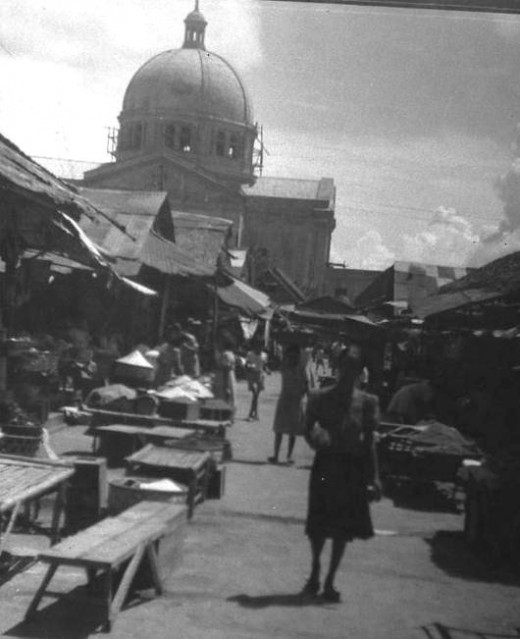
Sweating it Out While Waiting to Hear if War Had Really Ended
Ironically, for my Father and the others with him in San Fernando, the reaction to the receipt of the official announcement the next day of the Japanese surrender was apparently no more than a passing sigh of relief as he makes no mention of it in the journal. In fact the next paragraph following the discussion of the unofficial word of surrender on August 14th describes everyone’s concerns the next day - August 15th.
It was at noon, Tokyo time on August 15, 1945 that the Emperor of Japan publicly announced that Japan had officially surrendered. However, my Father’s account of that day was rather gloomy, writing:
The next morning we were still excited, but more rational. After all, the “Emperor” clause made the surrender conditional, and we would only accept an unconditional surrender. Then began the worst “sweating out” period we had endured. We sweated out the Allied note to Japan. We sweated out the Japanese reply to that. We sweated out reports of our planes being fired on over Japan. We sweated out the refusal of the Jap troops in the SWPA (Southwest Pacific Area or region) to surrender. We sweated out the arrival of the Japanese surrender delegation to Manila. We sweated out the setting of the time and place for formal surrender. We just sweated! (Copyright © 1942-1945, 2010 Estate of Charles Nugent Sr.)
The Allied notementioned above probably refers to the Byrnes (Secretary of State James F. Byrnes) note of August 11th in response to an August 10th offer of surrender.
The governments of the U.S. and Japan were in indirect communication with each other via the Swiss Government with American messages being sent to the Swiss Embassy in Washington where they were forwarded to the Swiss Foreign Office in Berne and then to the Swiss Embassy in Tokyo. Japanese communication followed the same route in reverse.
The Byrnes Note stated that the Japanese could keep the Emperor if they so choose but that he would have to report to and be under the authority of an Allied Commander-in-Chief in Tokyo (General MacArthur was given that position following the surrender).
Life Goes On
Like all major events that seem so important later in history books, people’s main concerns are most frequently focused on personal issues at hand and this was the case with the troops in San Fernando:
We also had our local problems to face. We were wondering how this sudden end would affect us. Would we stay here, return to the States, or go to Japan? Would the points be lowered enough to include us? (Copyright © 1942-1945, 2010 Estate of Charles Nugent Sr.)
My Father ended his brief account of V-J Day in San Fernando, Philippine Islands in 1945 with a single sentence:
After a while, the thrill and novelty wore off, and once more we settled down to the daily routine. (Copyright © 1942-1945, 2010 Estate of Charles Nugent Sr.)
Front Cover of Booklet Describing History of Co A, 16th Signal Battalion
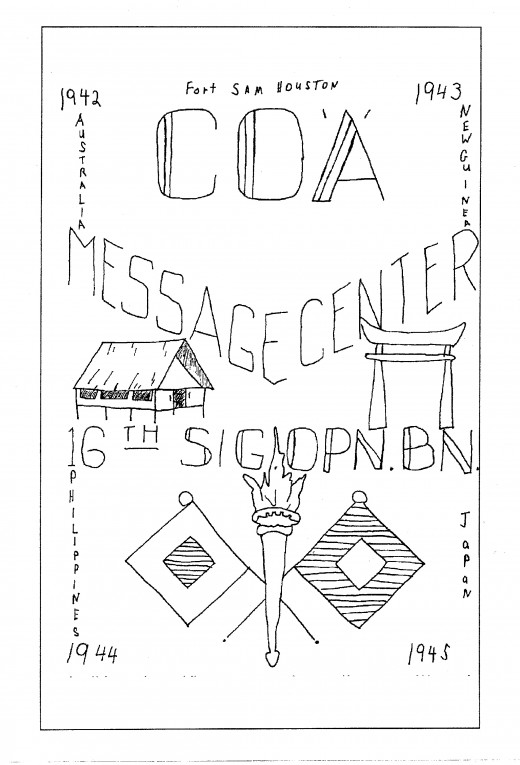
End of War Was Great News But Other Things Remembered in More Detail
It wasn't only my Father's account which gave short space to describing the news of the Japanese surrender and the end of the war in the Pacific.
While waiting to go home during their tour as members of the occupation force in Japan some of the men in my Father's unit put together a short history of Company A of the 16th Signal Battalion.
With his 76 points, my Father was among the first in his unit to leave Japan and return home, so he did not participate in the writing of eighteen page booklet of memories which the authors mimeographed and shared with their fellow members of Company A.
My Father didn't receive a copy until a decade later when a former comrade, Arnold McBrayer visited our hometown on business and looked my Father up. My Father was pleasantly surprised to receive Mr. McBrayer's call saying he was in town and my Mother immediately suggesting that he be invited for dinner the next night.
I remember that dinner and spending the evening listening to my Father and Mr. McBrayer reminisce about the war.
After returning home to North Carolina, Mr. McBrayer sent my Father a copy of booklet that had been written after my Father had left Japan.
Page in History of Co A Describing the Unit's Time in San Fernando, PI
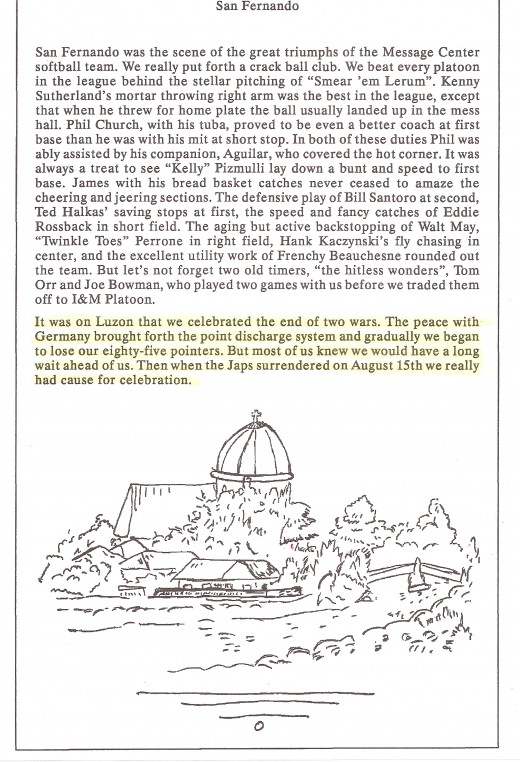
Links for Further Reading
- Celebrating Christmas in Distant Jungles During World War II
While a great number of fascinating Hubs have been written about this week's HubMob topic of Christmas, the three about Christmas in the Philippines - Merry Christmas from the Philippines by maudine_05 How... - Some Smoking War Tales
Most battlefield photos of modern soldiers taken immediately after battle usually depict an unshaven and weary GI with a cigarette hanging from the corner of his mouth. This is such a common sight in modern... - Christmas in a War Zone - From a World War I Soldier's Diary
The request was for a Hub dealing with Christmas in a war zone. Patty Inglish has already provided an excellent Hub on this topic with her article about the 1914 Christmas Truce during World War I. ...



